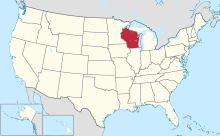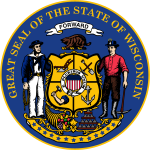
The 1924 United States presidential election was the 35th quadrennial presidential election, held on Tuesday, November 4, 1924. In a three-way contest, incumbent Republican President Calvin Coolidge won election to a full term. Coolidge was the second vice president to ascend to the presidency and then win a full term.
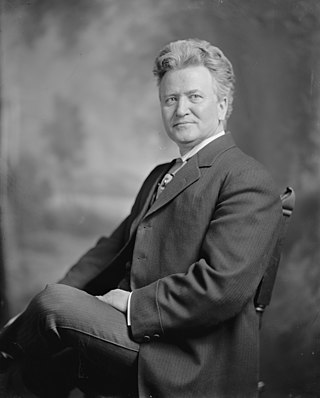
Robert Marion "Fighting Bob" La Follette Sr., was an American lawyer and politician. He represented Wisconsin in both chambers of Congress and served as the governor of Wisconsin from 1901 to 1906. A Republican for most of his life, he ran for president of the United States as the nominee of his own Progressive Party in the 1924 presidential election. Historian John D. Buenker describes La Follette as "the most celebrated figure in Wisconsin history".

Douglas J. La Follette is an American academic, environmental scientist, and politician who served as the 30th secretary of state of Wisconsin from 1983 to 2023. He is a member of the Democratic Party. At the time of his retirement, La Follette was the longest-serving statewide elected official in the United States; he was narrowly re-elected in 2022 to an unprecedented 12th term in office, but retired shortly after the start of the new term. He previously served as the 28th secretary of state from 1975 to 1979, and in the Wisconsin Senate from 1973 to 1975.
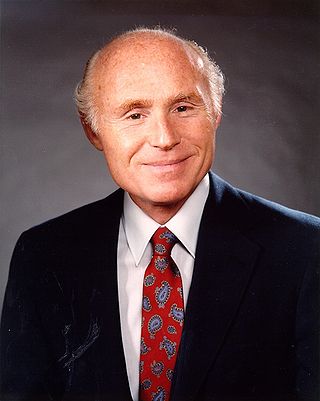
Herbert Hiken Kohl was an American businessman, philanthropist, and Democratic politician from Milwaukee, Wisconsin. He served 24 years as a United States senator from Wisconsin, from 1989 to 2013, and earlier served as chairman of the Democratic Party of Wisconsin.

The 1924 United States presidential election in Wisconsin was held on November 4, 1924 as part of the 1924 United States presidential election. State voters chose 13 electors to the Electoral College, who voted for president and vice president.
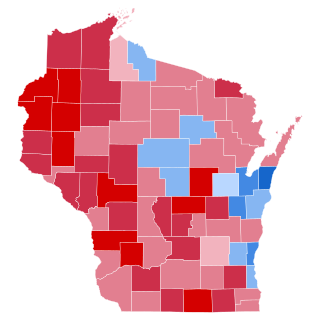
The 1928 United States presidential election in Wisconsin was held on November 6, 1928 as part of the 1928 United States presidential election. State voters chose 13 electors to the Electoral College, who voted for president and vice president.

Since Alaska's admission to the Union in January 1959, it has participated in 16 United States presidential elections, always having 3 electoral votes. In the 1960 presidential election, Alaska was narrowly won by the Republican Party's candidate and incumbent vice president Richard Nixon, defeating the Democratic Party's candidate John F. Kennedy by a margin of just 1.88%. In the 1964 presidential election, the Democratic Party's candidate Lyndon B. Johnson won Alaska in a national Democratic landslide victory. Since the 1964 election, Alaska has been won by the Republican Party in every presidential election.

Since Arizona's admission to the Union in February 1912, it has participated in 28 United States presidential elections. In the 1912 presidential election, the incumbent president William Howard Taft finished fourth in Arizona, receiving just 12.75% of the popular vote. In the 1936 presidential election, the Democratic Party's candidate Franklin D. Roosevelt won Arizona, defeating the Republican Party's candidate Alf Landon by 42.92%, which remains the largest margin of victory in the state's history. Ross Perot, the independent candidate in the 1992 presidential election, received the highest vote share (23.79%) ever won by a third-party candidate in Arizona.

Arkansas is a state in the South Central region of the United States. Since its admission to the Union in June 1836, it has participated in 46 United States presidential elections. In the realigning 1860 election, Arkansas was one of the ten slave states that did not provide ballot access to the Republican nominee, Abraham Lincoln. Subsequently, John C. Breckinridge won the state by a comfortable margin, becoming the first third party candidate to win Arkansas. Soon after this election, Arkansas seceded from the Union and joined the Confederacy. Following the secession, Arkansas did not participate in the 1864 presidential election. After the Civil War, Arkansas was readmitted to the Union in 1868. In the 1872 election, all six of Arkansas's electoral votes were invalidated due to various irregularities including allegations of electoral fraud.
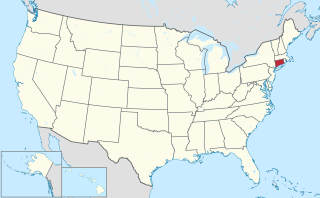
Connecticut is a state in the New England region of the United States. One of the original Thirteen Colonies, Connecticut has participated in all fifty-nine U.S. presidential elections since the American Revolution. In the early days of the United States, Connecticut was known for supporting the conservative Federalist Party. In the Second Party System, Connecticut leaned towards the anti-Jackson candidates. Following the Civil War, Connecticut was a swing state for a long time until 1896. Thereafter until 1932, Connecticut was a Republican stronghold. During this period, Connecticut Republican Party chairman J. Henry Roraback built up a political machine which was "efficient, conservative, penurious, and in absolute control".

Florida is a state in the South Atlantic region of the United States. Since its admission to the Union in March 1845, it has participated in 43 United States presidential elections. Florida participated in the presidential election for the first time in 1848. In this election, the Whig Party won Florida's three electoral votes with 57.20% of the vote, the only time the Whig Party won in Florida. In the realigning 1860 election, Florida was one of the ten slave states that did not provide ballot access to the Republican nominee, Abraham Lincoln. In the 1860 presidential election, John C. Breckinridge emerged victorious in Florida, winning 62.23% of the vote. Shortly after this election, Florida seceded from the Union and became a part of the Confederacy. Due to the secession, Florida did not participate in the 1864 presidential election. With the end of the Civil War, Florida rejoined the Union and participated in the 1868 presidential election. The 1868 election was the sole presidential contest in Florida not decided by popular vote, but instead by the state legislature. Florida voted for the Republican nominee in all three presidential elections during the Reconstruction era.
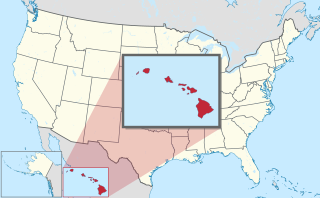
Hawaii is a state in the Western United States located in the Pacific Ocean about 2,000 miles from the U.S. mainland. Since its admission to the Union in August 1959, it has participated in 16 United States presidential elections. In the 1960 presidential election, Hawaii was narrowly won by the Democratic Party's candidate John F. Kennedy, defeating the Republican Party's candidate and incumbent vice president Richard Nixon by a margin of just 0.06%. In the 1964 presidential election, the Democratic Party's candidate Lyndon B. Johnson won Hawaii by a margin of 57.52%, which remains the largest ever margin of victory in the state's history. Since the 1960 election, Hawaii has been won by the Democratic Party in every presidential election, except in 1972 and 1984, which were both won in a national Republican landslide victory by Nixon and Ronald Reagan respectively.
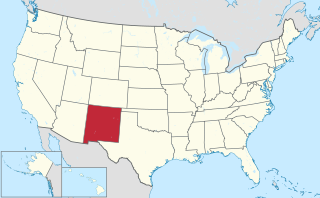
Since New Mexico's admission to the Union in January 1912, it has participated in 28 United States presidential elections. In the 1912 presidential election, Theodore Roosevelt, the Progressive Party's nominee, received the highest vote share (17.1%) ever won by a third party candidate in New Mexico. In the 1932 presidential election, Democrat Franklin D. Roosevelt won New Mexico, defeating Republican Herbert Hoover by 26.96%, which remains the largest ever margin of victory in the state's history. In the 2000 presidential election, Democrat Al Gore won New Mexico, defeating Republican George W. Bush by a margin of just 0.06%.

Washington is a state in the Pacific Northwest region of the United States. Since its admission to the Union in 1889, the state has participated in 33 United States presidential elections.

Since Wyoming's admission to the Union on July 10, 1890, it has participated in 33 United States presidential elections, always having 3 electoral votes. Wyoming was the first place in America to grant women the right to vote, in 1869, well before it joined the Union in 1890. This was a significant milestone for women's suffrage and paved the way for other states to follow suit. As a state with a strong Republican tradition, Wyoming tends to favor the Republican Party in presidential elections. It has consistently voted for Republican candidates in recent decades and is considered a reliably red state. When Wyoming participated in its first presidential election in 1892, Republican candidate Benjamin Harrison won the state with 50.52% of the vote. Harrison's Democratic opponent, Grover Cleveland, who went on to win the election, did not even appear on the ballot in Wyoming.

The District of Columbia is a political division coterminous with Washington, D.C., the capital city of the United States. Since the enactment of the 23rd amendment to the Constitution in 1961, the district has participated in 15 presidential elections. The amendment states that it cannot have more electoral votes than the state with the smallest number of electors. Since then, it has been allocated three electoral votes in every presidential election. The Democratic Party has immense political strength in the district. In each of the 15 presidential elections, the district has overwhelmingly voted for the Democratic candidate, with no margin less than 56.5 percentage points. It has been won by the losing candidate in 8 of the 15 elections.

The 1924 United States presidential election in Minnesota took place on November 4, 1924, in Minnesota as part of the 1924 United States presidential election. Voters chose 12 electors, or representatives to the Electoral College, who voted for president and vice president.

The 1924 United States presidential election in Kansas was held on November 4, 1924 as part of the 1924 United States presidential election. State voters chose ten electors to the Electoral College, who voted for president and vice president.
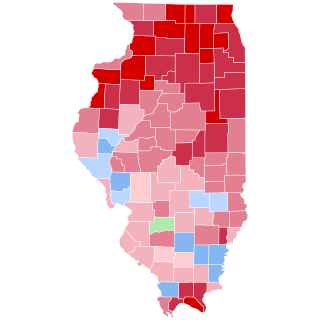
The 1924 United States presidential election in Illinois took place on November 4, 1924, as part of the 1924 United States presidential election. State voters chose 29 representatives, or electors, to the Electoral College, who voted for president and vice president.

The 1924 United States presidential election in North Carolina took place on November 4, 1924, as part of the 1924 United States presidential election, which was held throughout all contemporary forty-eight states. Voters chose twelve representatives, or electors to the Electoral College, who voted for president and vice president.
